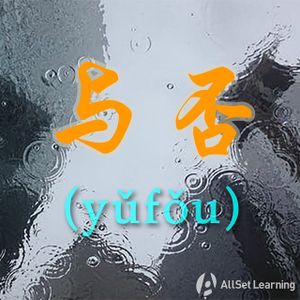Difference between revisions of "Expressing "whether or not" with "yufou""
m (Text replacement - "". " to "." ") |
|||
| (3 intermediate revisions by one other user not shown) | |||
| Line 1: | Line 1: | ||
| − | {{Grammar Box}} | + | {{Grammar Box}} |
{{Stub}} | {{Stub}} | ||
| − | 与否 is a grammatical particle that comes from classical Chinese meaning "whether or not" | + | 与否 is a grammatical particle that comes from classical Chinese meaning "whether or not." It is typically used at the end of the sentence or phrase. |
== Structure == | == Structure == | ||
Latest revision as of 09:06, 8 March 2016
| This article is a stub. Editors can help the Chinese Grammar Wiki by expanding it. |
与否 is a grammatical particle that comes from classical Chinese meaning "whether or not." It is typically used at the end of the sentence or phrase.
Structure
Verb/Adjective + 与否
Examples
- 成功 与否,要 靠 自己。
- 国家 发达 与否,取决于 它 的 人均 国内 生产 总值 有 多 高。
- 头发、 皮肤、 眼睛 等 可以 显示 身体 健康 与否。
Sources and further reading
NEEDS SOURCES!



